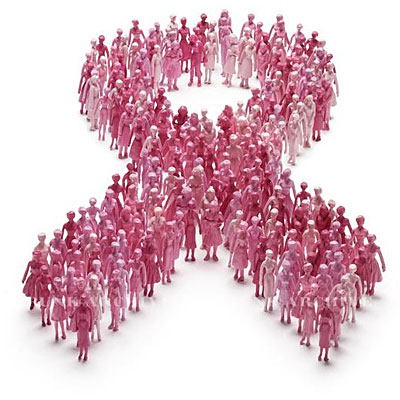Study says about 70% of early stage breast cancer patients may avoid chemotherapy

Team L&M
Breast cancer is the most common cancer in women in India and accounts for 27% of all cancers in women. At an incidence rate of 25.8 per 100,000, it is lower than in some developed countries but the mortality rate (12.7 per 100,000) is comparable to that in Western countries. Data on incidence rates of breast cancer from six major cancer registries of India show that the annual percentage increase in the incidence of breast cancer has been in the 0.46 to 2.56% range.
Recent breakthrough finding by Trial Assigning Individualised Options for Treatment (TAILORx) demonstrates that Oncotype DX Breast Recurrence Score® Test definitively identifies the 70% of women with early stage breast cancer who receive no benefit from chemotherapy and the 30% of women for whom chemotherapy benefit can be life-saving.
The TAILORx study, the largest ever breast cancer treatment trial, was published in the New England Journal of Medicine in June. It was supported by the United States National Cancer Institute (NCI), part of the National Institutes of Health, and designed and led by the ECOG-ACRIN Cancer Research Group.
The majority of breast cancer patients diagnosed worldwide have hormone-positive, HER2-negative, node-negative cancer. The TAILORx study definitively established that chemotherapy may be spared in about 70% of these patients, including all women older than 50 with Breast Recurrence Score® results of 0-25 and all women age 50 or younger with Breast Recurrence Score results of 0-15.
Importantly, 30% of early stage breast cancer patients will derive benefit from chemotherapy including women of any age with Breast Recurrence Score results of 26-100, and in women younger than 50, where a modest (2%) benefit from chemotherapy was observed with Breast Recurrence Score results of 16-20 which gradually grew as scores increased up to and above 25. This important finding reveals a new level of precision of chemotherapy benefit for younger patients that only the Oncotype DX®test can provide.
“The TAILORx findings can spare thousands of women from getting toxic chemotherapy treatment that really wouldn’t benefit them. By identifying the right patients who can benefit from chemotherapy, and sparing chemotherapy and its toxic side effects in those who will not benefit from its treatment, the personalised treatment approach is a breakthrough advancement in the medical fraternity. As the sole commercial representative in India for Genomic Health, we hope to bring changes in the standard of care in India,” shared Medilinks Inc CEO Prasad Vaidya.
In his acknowledgement of the TAILORx findings Dr SVS Deo, head of surgical oncology, AIIMS Hospital, New Delhi, said, “This study will change the way cancer is treated in the future. In the era of ‘precision medicine’, treatments are individualised according to the risk of the patients. Tests like Oncotype Dx will change the future of practice of oncology. One of the major concerns is the high cost of the test. The government and insurance agencies should allow reimbursement of expenses of the test as it helps in saving money by avoiding chemotherapy and side effects to a large number of patients.”
The trial enrolled 10,273 women with breast cancer from six countries across the globe. It used the Oncotype DX Breast Recurrence Score® test that assesses the expression of 21 genes associated with breast cancer recurrence to assign women with early-stage, HR- positive, HER2-negative, axillary lymph node–negative breast cancer to the most appropriate and effective post-operative treatment.
TAILORx participants with Breast Recurrence Score results from 0 to 10 were treated with endocrine therapy alone based on the prior results from the NSABP B-20 study, which showed no opportunity for chemotherapy benefit. TAILORx participants with Breast Recurrence Score results from 26 to 100 were treated with chemotherapy plus endocrine therapy based on the prior results from the NSABP B-20 study, which showed an absolute benefit of chemotherapy greater than 20 percent.
To more precisely define the effect of chemotherapy for women considered to be at intermediate risk for recurrence, 6,711 women with Oncotype DX Breast Recurrence Score results of 11 to 25, the primary study group in TAILORx, were randomized to receive endocrine therapy with or without chemotherapy. These randomised patients comprised two-thirds of all patients enrolled in TAILORx and were followed by the investigators for approximately nine years on average.
“This is an extremely well-conducted study as well as relevant because there are tremendous disadvantages of chemotherapy. The idea of not losing your hair, not being too unwell and avoiding other major side effects definitely make the test worth it. Just with the help of one score, the test can confirm whether you need chemotherapy or not. In the trends I have observed, 50-60% of the women don’t need chemotherapy and can be cured with hormonal therapy- which is a tablet. Everything comes for a price and the cost of the test is a small amount to pay in exchange of your life,” observed Dr Ramesh Sarin, senior consultant, surgical oncology, Indraprastha Apollo Hospitals, New Delhi. It is a small price for good quality life.
“Today, personalised medicine has allowed us to avoid chemotherapy for certain group of patients. We can select the people who don’t need chemo and administer it to only those who need it,” concluded oncologist Suresh Advani.



1 Comment
[…] minute, four women are diagnosed with breast cancer worldwide. Further, one woman loses life to the disease within five years of diagnosis. These […]